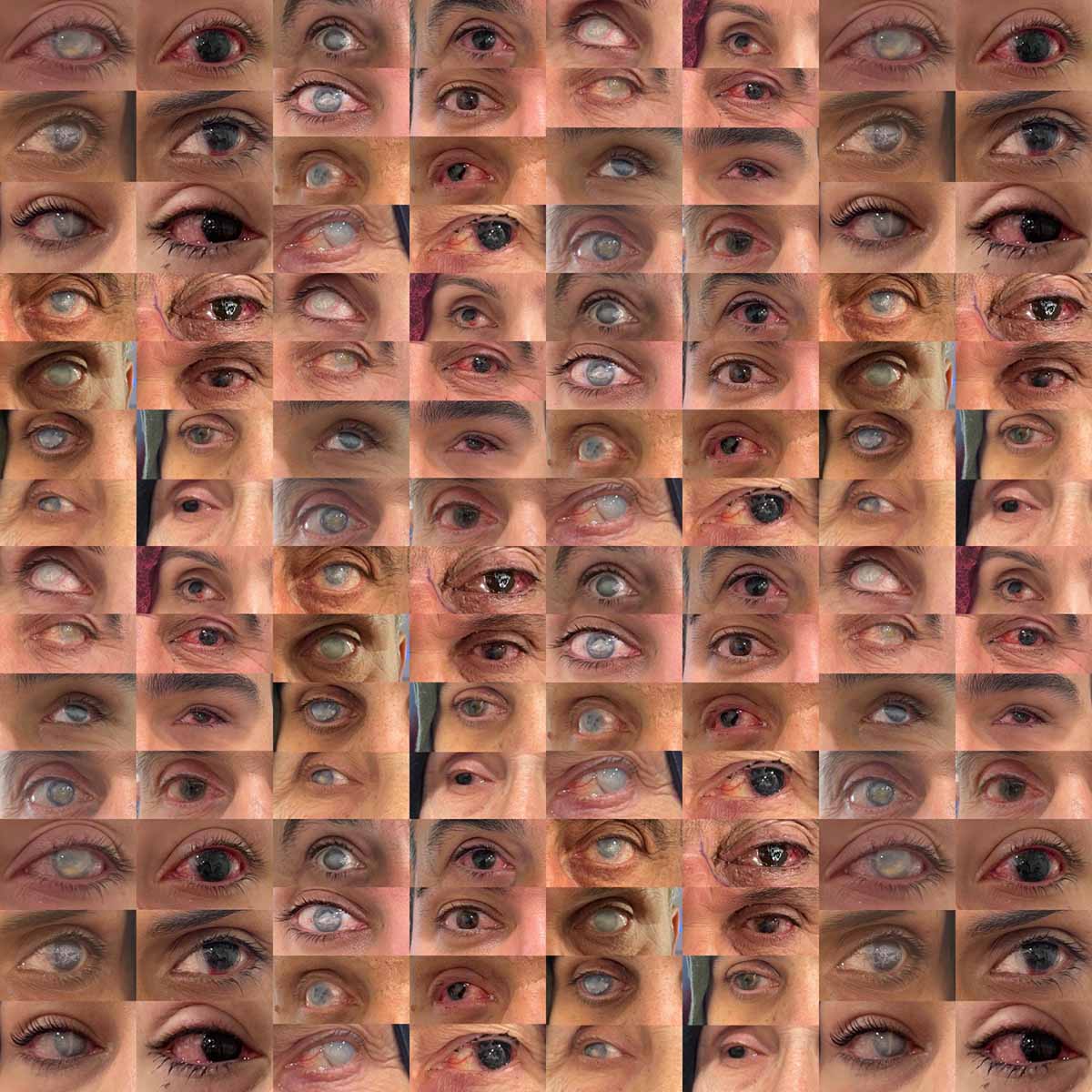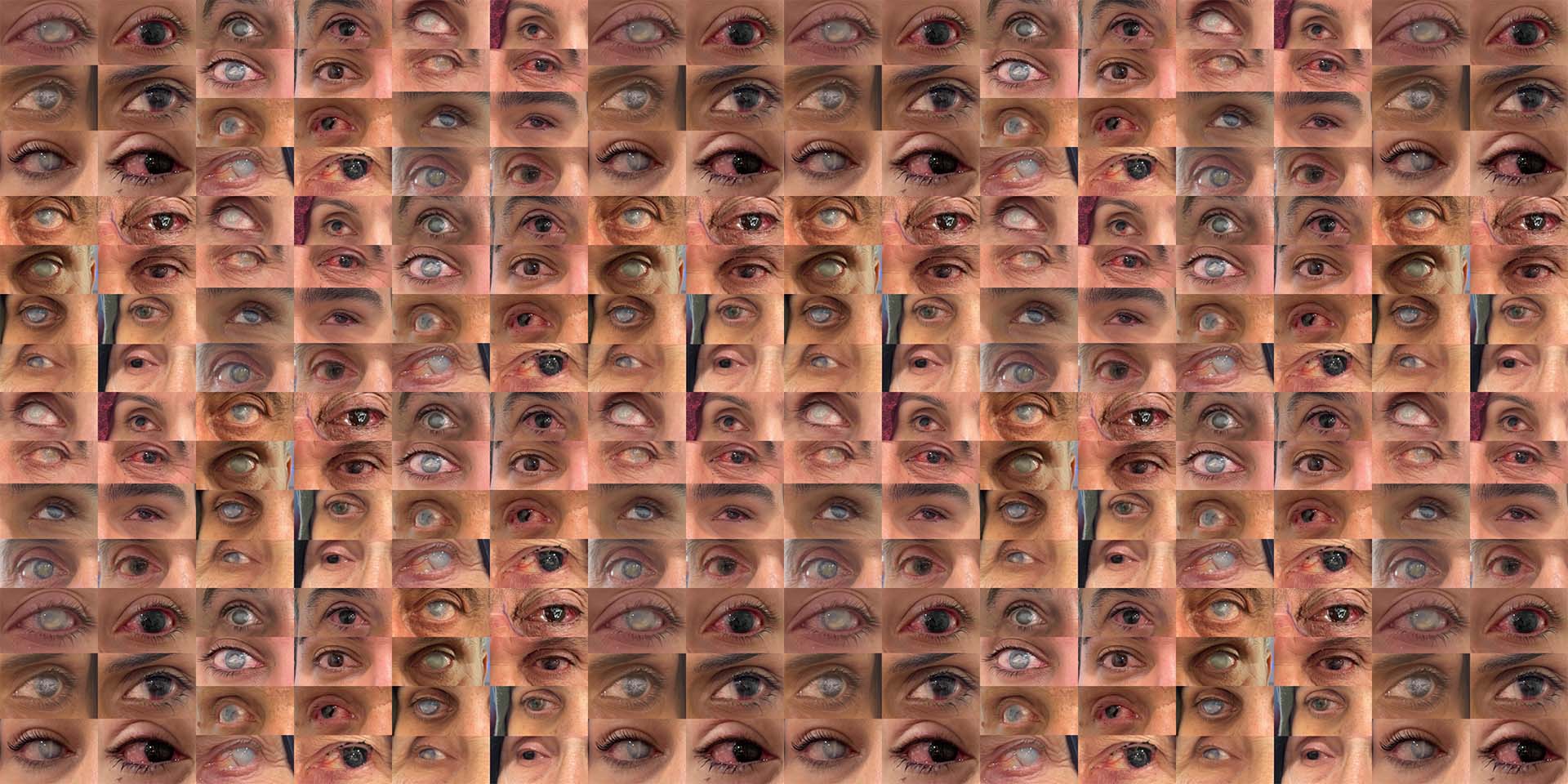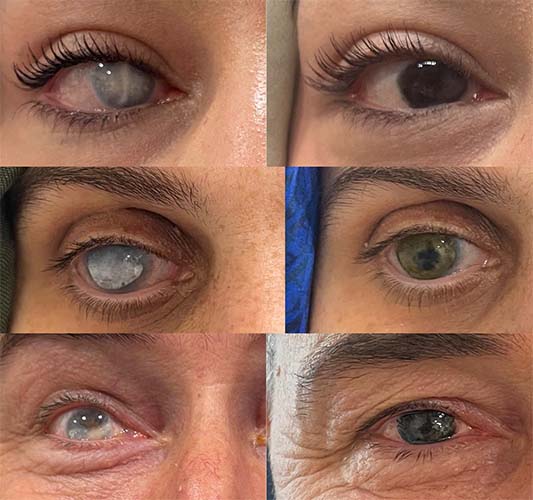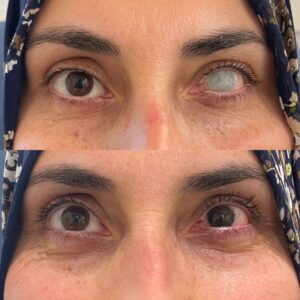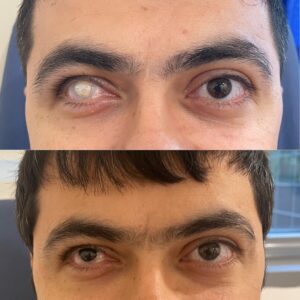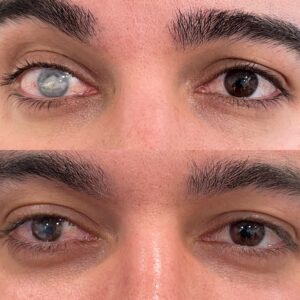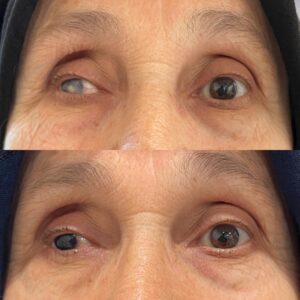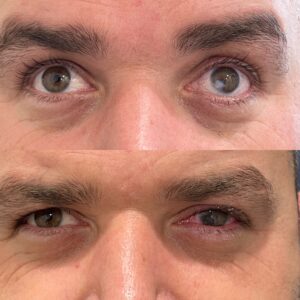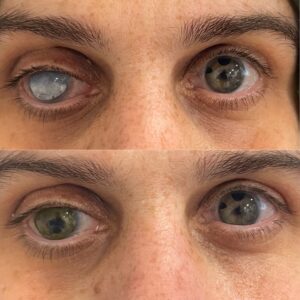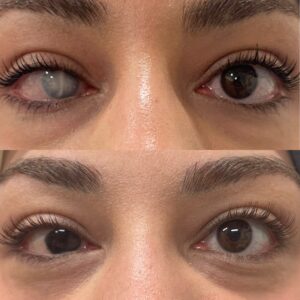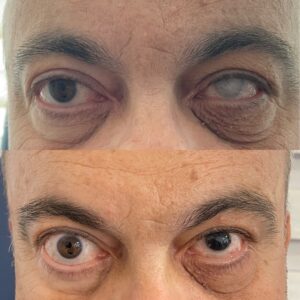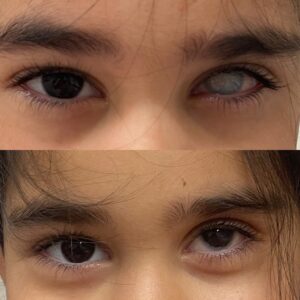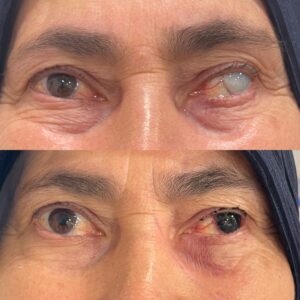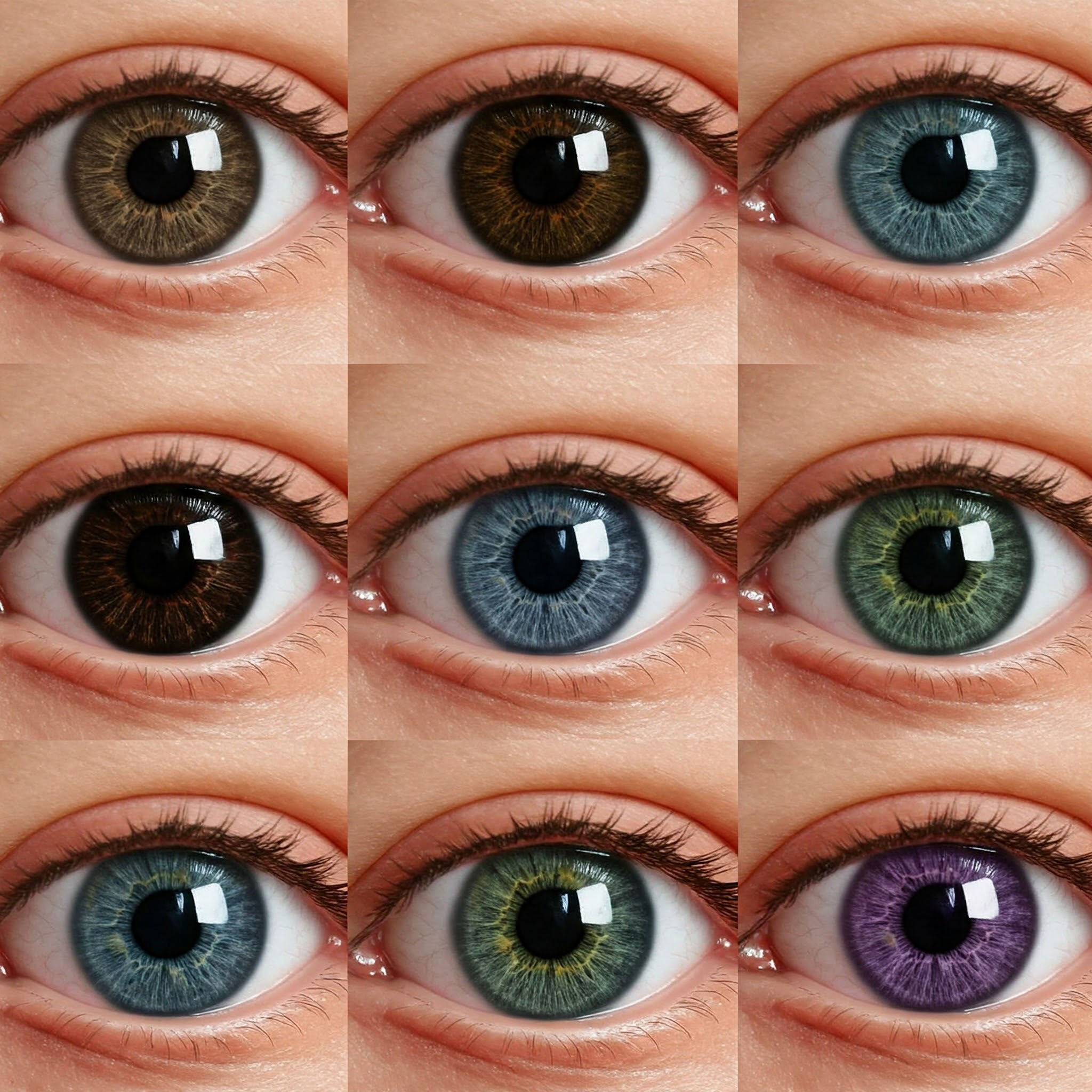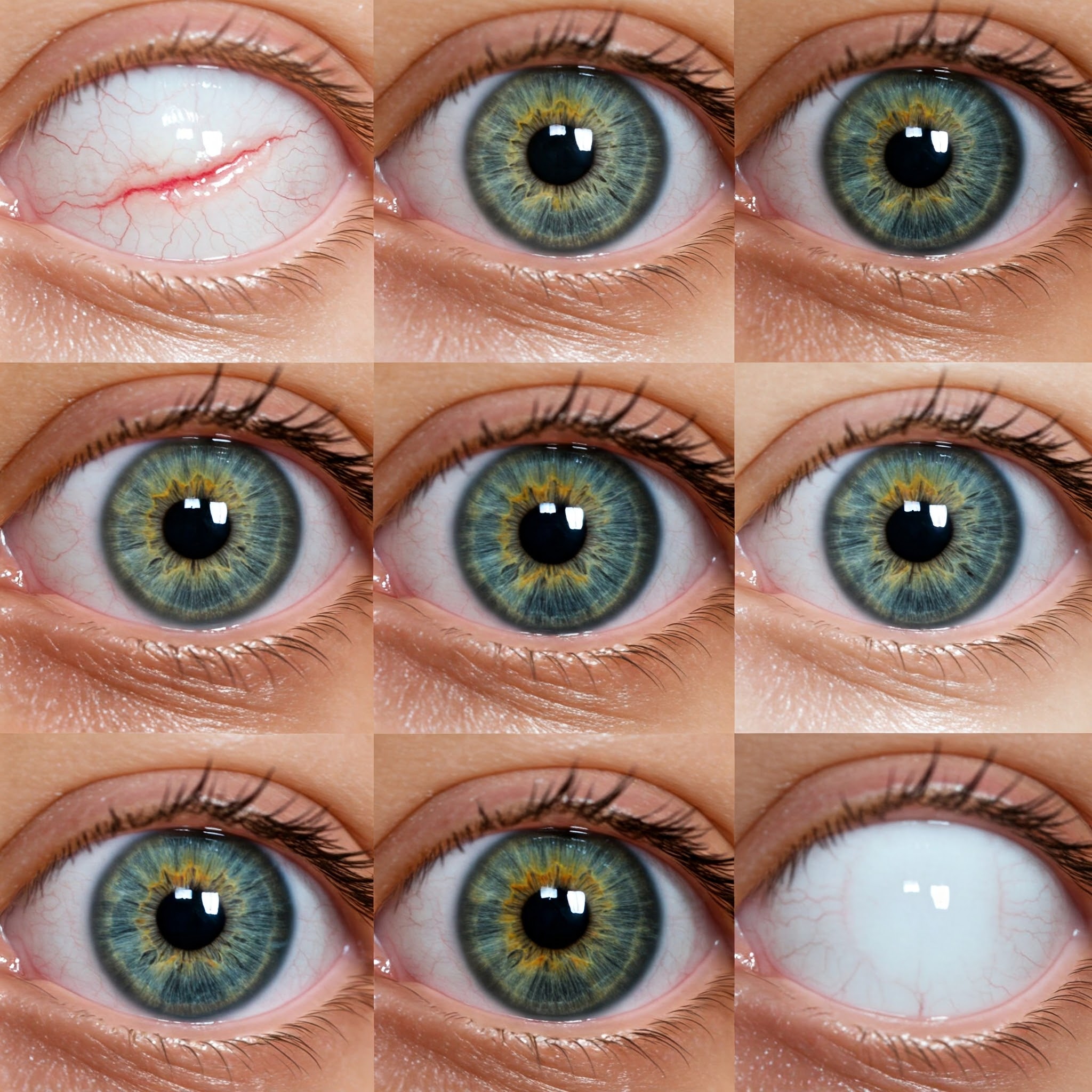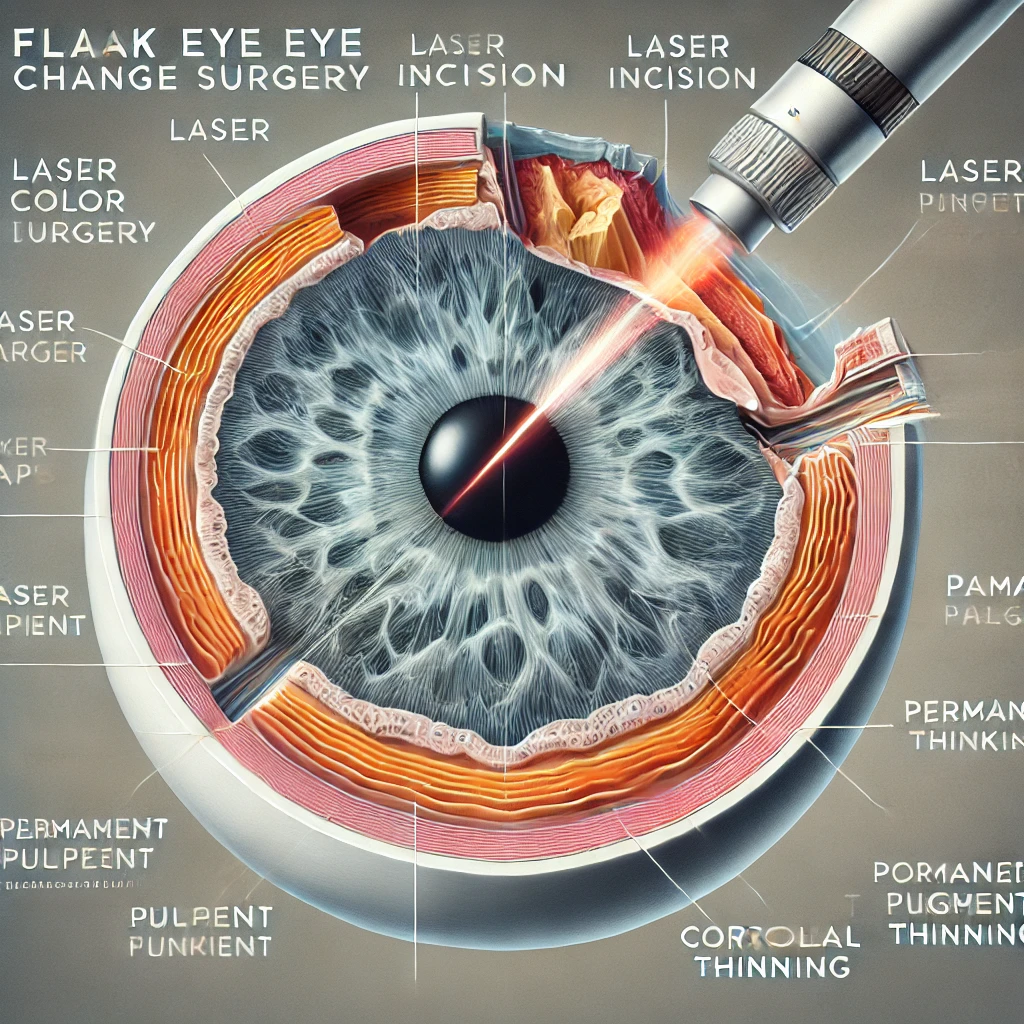
Case in 300+ For 6 Years

Success % 90 in Results

International 6 Publications
What is Eye Tattooing? How is Eye Tattooing Applied?
Eye tattooing, medically known as corneal tattooing or keratopigmentation, refers to the process of tattooing the cornea for aesthetic purposes, often in response to trauma or other factors that cause whitening of the cornea. With advances in medical technology, the procedure involves the application of pigment to the cornea, typically to restore the aesthetic appearance of the eye in alignment with the other eye’s natural color. It is important to note that this procedure does not restore vision; rather, it serves solely to enhance the cosmetic appearance of the eye.
Corneal opacities can significantly impact patients’ social lives, particularly from an aesthetic perspective. Many patients with corneal damage opt for colored contact lenses to mask the appearance of their eyes. However, for individuals with corneal leukomas (whitening) and other types of corneal damage, colored contact lenses may not be suitable. As a result, some patients undergo surgical removal of the eye to fit a prosthesis. However, prosthetic surgery can lead to several complications, including infections, limited movement, pain, irritation, burning, and excessive tearing. Moreover, the psychological impact of having an eye surgically removed—especially when the damaged eye has no remaining vision—can be profound, leading to severe psychological trauma for the patient.
In corneal tattooing, pigment is applied to the outermost layer of the eye, the cornea, to alter its color and improve its aesthetic appearance. This procedure is typically performed on eyes that no longer have vision, aiming to enhance their cosmetic appearance. The pigment injected into the cornea mimics the natural color of the patient’s healthy eye, resulting in an aesthetically pleasing outcome.
The Social Problem of Purely White Eyes
Individuals with severely damaged or completely white eyes often face significant social challenges. They may feel uncomfortable engaging in public spaces or social environments. Children with such conditions may have difficulty attending school and may be socially excluded by their peers. Furthermore, these individuals may experience challenges in forming close relationships with others, particularly young children. Moreover, individuals with severely damaged eyes often encounter substantial difficulties in the job market, with their appearance potentially limiting their employment opportunities.
- Colored Contact Lenses: Not all eyes are compatible with colored contact lenses.
- Corneal Transplant: This is the first-line treatment for patients with any potential for restored vision.
- Scleral Shell: In selected cases, a prosthetic shell is applied over the affected eye without enucleation.
- Prosthetic Eye Surgery: This involves surgically removing the damaged eye and replacing it with a prosthesis. However, it comes with drawbacks, such as limited movement, infection risk, and the need for prosthetic maintenance.
- Corneal Tattooing: This method restores an aesthetic appearance without requiring enucleation, preserving the eye and limbal stem cells.
- Patients who cannot or prefer not to use colored contact lenses.
- Patients who are candidates for prosthetic eye surgery.
- This procedure is not performed on healthy eyes.
- Attempting to change eye color in healthy individuals has led to vision loss in some cases globally.
- Our focus is strictly on restoring the appearance of problematic, whitened eyes.
- This procedure can be applied to partially whitened eyes with some retained vision.
- It can also be used for patients experiencing glare after glaucoma surgery.
- A detailed evaluation is performed by an experienced specialist to determine whether the whitened eye is suitable for tattooing, while exploring all alternative treatments.
- Photographs are taken to assess the appropriate dye color that matches the unaffected eye.
- Under local anesthesia in a sterile operating room, the central area of the eye is tattooed black, and the surrounding areas are colored to match the other eye. The procedure takes approximately 30–45 minutes.
- Longevity of the Dye: The dyes used are intended to be permanent; however, their stability over 5–10 years remains uncertain. While the pigment may remain for a lifetime, there is a possibility of fading. This risk is lower when performed by experienced specialists.
- Repeat Procedures: Corneal tattooing is a repeatable process. Among the 250 patients treated in the past four years, 20 required a second application due to fading. Results following a second procedure were more successful. No patients have required a third procedure.
- Postoperative Symptoms: Patients may experience redness, tearing, or irritation in the initial weeks. These symptoms typically subside within one month.
- Perforation Risk: Thin corneas are at risk of perforation. Among 250 cases, four patients experienced corneal perforation.
- Not all dyes are suitable for use in the eye, and only those with low fading potential should be applied.
- Multiple color options are considered to closely match the patient’s unaffected eye.
- While achieving a perfect color match is challenging, efforts are made to ensure the tattoo resembles the natural eye color as closely as possible.
- Corneal tattooing can be performed in a range of colors, including brown, green, and blue. However, achieving color uniformity is more difficult with lighter tones.
- Among 15 cases of green corneal tattooing performed in four years, five patients had slight color differences compared to the unaffected eye, though all reported significant aesthetic improvement compared to their preoperative appearance.
- Various techniques are available for corneal tattooing.
- Globally, black tattoos are the most common.
- The technique employed is tailored to each patient’s unique needs.
- At our hospital, unlike the global standard of using only black pigments, we apply a variety of colors, such as brown, green, or blue, for a more natural result.
- Photographs taken immediately after the procedure should not be used as the sole measure of success.
- Color harmony with the unaffected eye should be assessed after a minimum of six months.
Assoc. Prof. Ömer Faruk YILMAZ
